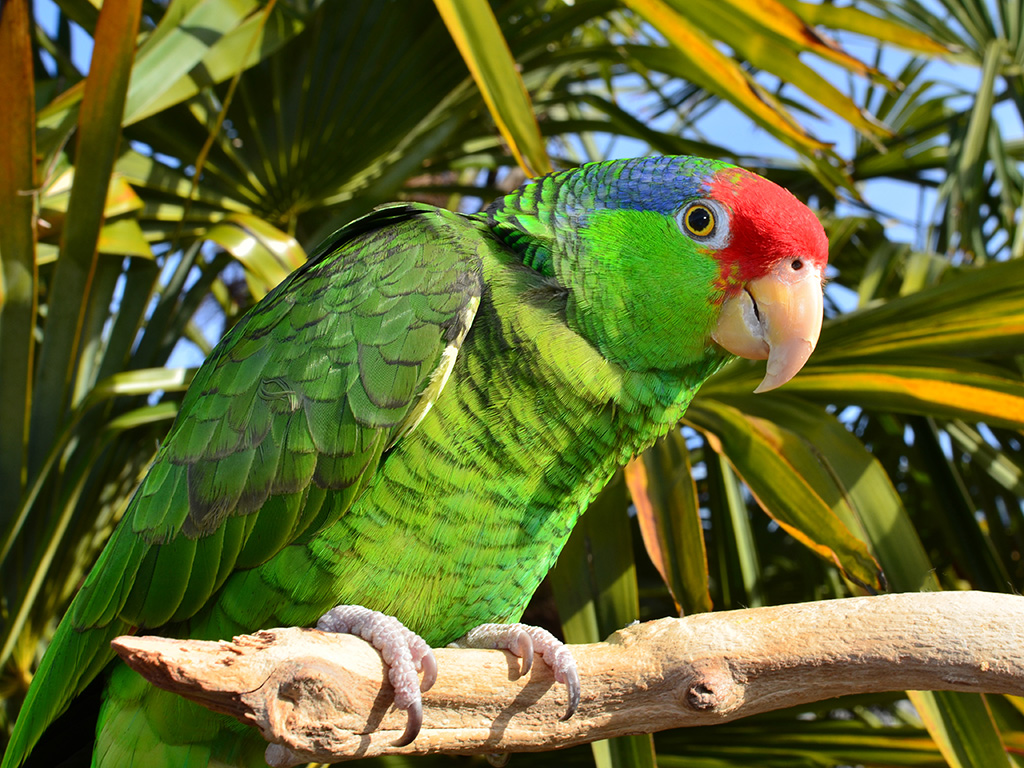Parrot species is thriving in urban areas

Credit: Tracy Starr/shutterstock.com
A Texas A&M-led research team has discovered that a population of endangered red-crowned parrots is thriving in urban areas of South Texas. The parrots are a unique case, considering that many animal species are affected negatively by the expansion of human urban areas, which can lead to deforestation and pollution of natural habitats.
These mostly green parrots, which have a cluster of bright red feathers on their heads, are also an unusual example of a species that has adapted well in the face of poaching and the pet trade moving them from their native areas.
The team — led by Dr. Donald J. Brightsmith and graduate student Simon Kiacz, from the School of Veterinary Medicine and Biomedical Sciences’ (VMBS) Department of Veterinary Pathobiology — recently published its findings in the scientific journal Diversity.
The team’s documentation of the red-crowned parrot’s habitat ranges and urban dependency will enable the Texas Parks and Wildlife Department and other conservationists to better protect these endangered birds.
Meet The Red-Crowned Parrot
Red-crowned parrots were originally native to a small region of Northeastern Mexico, where they are considered endangered because of habitat loss and poaching tied to the illegal animal trade. For parrots, this process often involves poachers stealing eggs or young chicks out of nests and selling them, sometimes for hundreds of dollars each.
“Parrots are popular pets in places like South Texas and Latin America,” Kiacz said. “Unfortunately, most people, even law enforcement officers, don’t realize that these parrots are protected.”
In fact, the animal trade is one reason that the red-crowned parrots can now be found in Texas.
“Some of them certainly flew across the border, but many were brought over during the 1980s when it was still legal to buy and sell them,” Brightsmith said.
Over time, Texas has welcomed the red-crowned parrot, even giving it native species status.
“Without native species status, it would be much more difficult to provide protection for the species,” Brightsmith said.
One benefit of being a native species is that Texas Parks & Wildlife took interest in research seeking to better understand whether the parrots are doing well in South Texas. That interest is what paved the way for Brightsmith and Kiacz’s project.
“During data collection, I was looking for population information, trend information, the threats to the populations here in Texas, and habitat usage,” Kiacz said. “We wanted to understand how these birds are doing and what we might be able to do to help them.”

